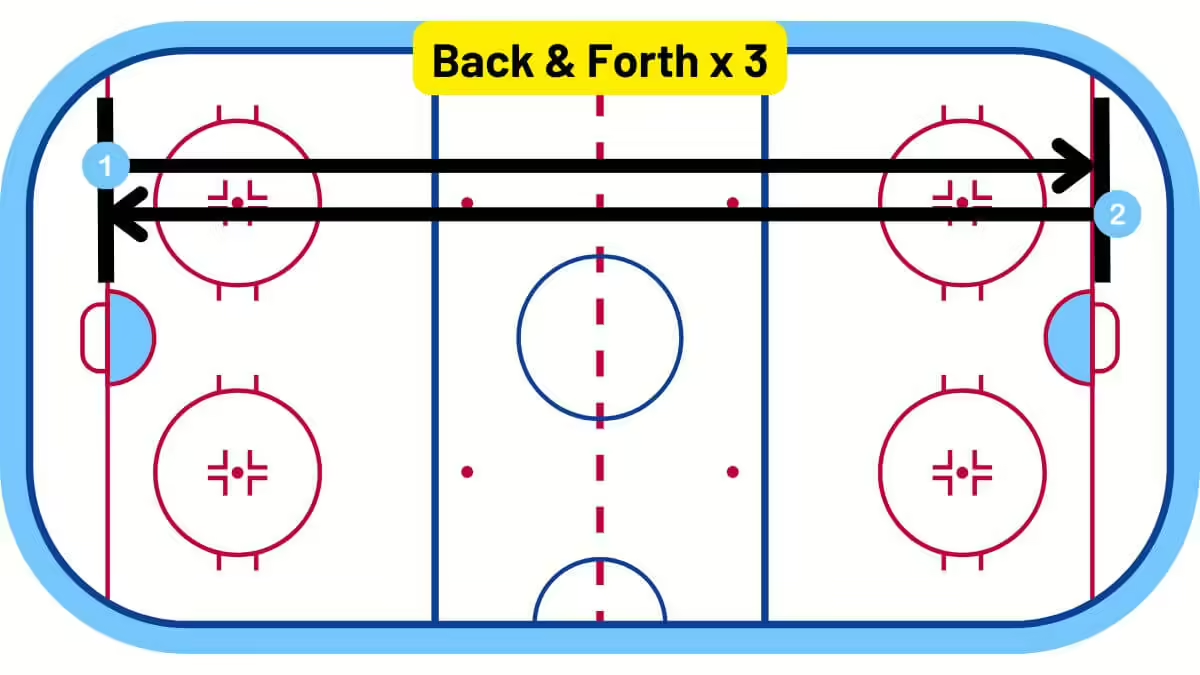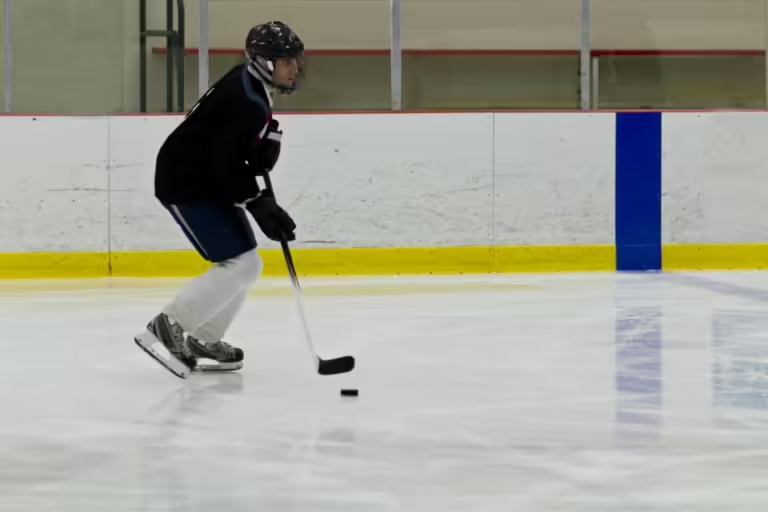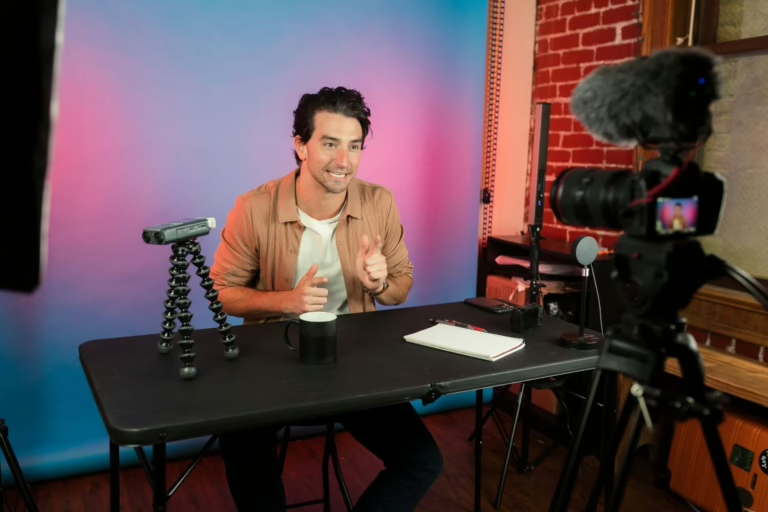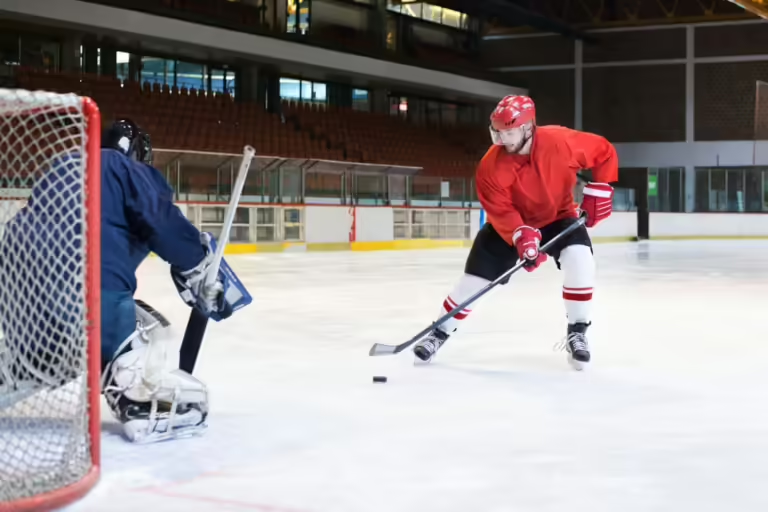You definitely need to be doing off-ice hockey cardio if you want to be well-conditioned for your games. Unfortunately off-ice conditioning can only get you so far without doing on-ice conditioning drills as well.
Here are our favorite on-ice sprinting and conditioning drills. You’ll absolutely hate them while you’re doing them but you’ll love the performance boost you’ll see in your games.
1. Goal Line To Near Blue Line

If you want to improve your chances of winning battles to the puck, this is the drill for you.
For this drill, all you’ll do is start at the goal line and skate as hard and as fast as you can to the blue line. That’s it. It’s important not to stop at the blue line but rather skate through it.
Going from goal line to blue line will take most players between 3-6 seconds depending on age and skill. That makes this drill all about quick feet and getting to top speed as quickly as possible.
For proper conditioning, aim to do this drill 6-8 times.
2. Center Ice to Blue Line To Other Blue Line

This is another very quick drill. One rep may take only 5-10 seconds depending on age and skill level.
A great way to really ramp up the intensity is to make this a race between two players, with a puck waiting at the last blue line – the goal is to get the puck and get a breakaway shot on net.
This drill will help condition your legs to get to top speed as quickly as possible. And by doing a higher number of reps of this drill, you can build a solid cardiovascular foundation that will allow you to go hard for the entirety of your shift.
Aim to do 4-6 sets of this drill.
3. Goal Line To Near Blue Line Sprint Repeats For 30s

For this drill, you’ll be starting at the goal line, sprinting full speed to the near blue line, stopping, sprinting back to the goal line, and repeating that back-and-forth for 30 seconds. The key is to face the same direction when you stop so you practice the first stride push on both sides.
It only takes a few strides to get from goal line to blue line, so this drill really helps train explosiveness of your first few strides.
With this drill only lasting 30 seconds, you should be able to skate at or near full intensity for the duration of the drill. The ideal work-to-rest ratio here will be 1:3, so if this is a team drill, it’s best to break up into three groups and each group takes turns putting in their 30 seconds of work.
Aim for 3-5 total sets. This time, rep and set range will help you build conditioning to allow you to go the whole game without getting gassed.
4. Down And Back x 3 (aka The 50 Second Drill)

Of all the drills in this article, this is the longest one at roughly 50 seconds. It’s also one of the most grueling and painful drills because you’re essentially racing the clock and skating as hard as you can for all 50 seconds.
The drill is simple – start at the goal line and skate to the far goal line and back three times. Elite players ages 17 and older should be able to go down and back three times in about 50 seconds. That timing will have to be adjusted for age and skill level to be an appropriate goal.
Coaches can add a nice incentive to this drill by running it as the last drill of practice and letting all skaters who beat the clock off the ice, but the players who don’t must skate it again. The drill should be run a maximum of three times before practice is over.
How Often Should You Do On-Ice Sprints?
Sprinting is very taxing on the body physically and mentally. But in order to maintain your skill and become even better, on-ice sprinting must be done. That means even mid-season you should be doing at least one day of on-ice sprinting.
During the off-season is when you can really build your cardiovascular endurance. To do that, you’ll want to do a combination of on-ice and off-ice sprint workouts about 4 times per week. For some, that might mean 3x off-ice workouts and 1x on-ice workout, for others it might be 3x on-ice workouts and 1x off-ice workouts. I know ice time is expensive, but all else being equal you should prioritize the on-ice workouts such as these.
Aerobic vs Anaerobic Training?
The first two drills mentioned above are more focused on training your anaerobic systems. However, by stacking them together with many sets you can also build your aerobic capacity.
The last two drills were strictly aerobic training as they are longer drills that force you to build your endurance.
In order to become a well-rounded hockey player that can play all their shifts at full speed as well as their first and last shift at full speed, you’ll need to build up both systems.
Remember To Stay Hydrated
Any hockey practice will make you sweat, but a hockey practice that incorporates some or all of these conditioning drills will certainly deplete you of essential fluids and electrolytes. Be sure to replace them during and after practice to ensure you stay healthy and can recover quickly. Here’s a list of our favorite hydration drinks for hockey players.
Watch Your Conditioning Go Through The Roof
Nobody likes conditioning drills – they hurt. But when you’re out-skating the other team shift after shift, you’ll wish you had done these conditioning drills much earlier in your hockey career.
Put in the work and you’ll see the results on the ice. Enjoy the process!



